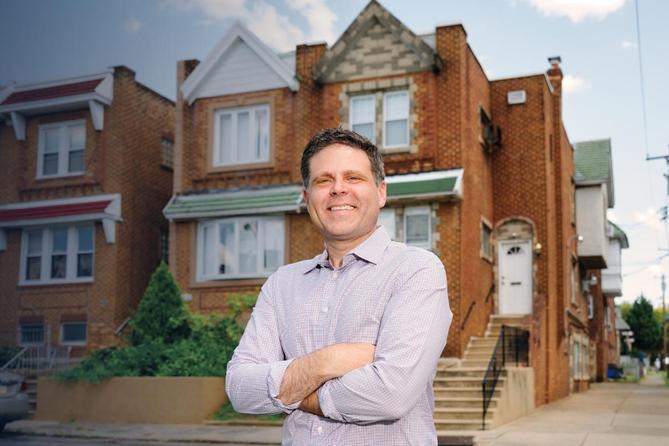What’s your Pennsylvania story?
I'll start: My ancestors immigrated from Ireland, Alsace, and Germany, arriving in Philadelphia before continuing on to more rural corners of the state.
My mother’s family followed paper mill and tannery jobs to the highlands of Elk County, where they ate ham barbecue sandwiches and a venison Christmas sausage year-round.
My father’s family arrived in Lycoming County’s green river valley from York, carrying on the Pennsylvania Dutch traditions of luck-summoning pork and sauerkraut on New Year’s, fist-sized dumplings, and shoofly pie.
In Harrisburg, state Rep. Jared Solomon (D., Philadelphia) has introduced a bill that would create a state-guided social studies curriculum around students' Pennsylvania origin stories, which they'd be asked to share. He gave his and explained the bill’s intent in a phone call with PA Local.
“I think it’s a true Pennsylvania immigrant story,” he began. “My great grandparents escaped religious persecution when they escaped the pogroms in the Ukraine, and they settled in northeast Philadelphia, started a business, and raised a family. … Then, being a Jewish family from the Ukraine was considered extremely diverse.”
Now, he adds, “Pennsylvania’s diversity has become so much more rich, and I think they would be shocked and happy to see it.” Solomon says his district — in the same part of Philadelphia his great grandparents settled in — is the most diverse in the state House, and counts residents from Syria, Iraq, Brazil, and beyond.
Solomon said the bill, which was recently recommitted to the state House’s Appropriations Committee, is timed to coincide with America’s 250th anniversary celebrations in 2026, in which Pennsylvania — certainly Philadelphia — will play a starring role. (There are only five scheduled session days left in this legislative session.) But it’s also being floated at a moment — and during an election — that has placed immigration very much front and center.
The Pennsylvania State Data Center at Penn State Harrisburg notes great variation in the “Diversity Index” — the probability that any two individuals chosen would be of a different race or ethnicity — between counties here. It’s around 70.5% in Philadelphia County at the high end, and 8.9% for Bedford County at the low end. The center says diversity increased in all counties between 2010 and 2020, during which time Pennsylvania’s overall Diversity Index grew from 35.3% to 44.0%. The biggest jumps were seen in Luzerne, Lackawanna, and Cumberland Counties.
Solomon’s bill, which is co-sponsored by Cumberland County Republican state Rep. Barbara Gleim, would task the state’s Department of Education with developing guidelines for a “What’s your Pennsylvania story?” curriculum in schools.
Gleim did not respond to PA Local’s request for her Pennsylvania story but sent this statement: “In commemorating the 250th Anniversary of the United States, we agreed that education guidelines should be considered in social studies to talk about how the republic was formed and how our ancestors’ journey leading up to present day impacts our country’s culture.”
Pennsylvania was the most diverse colony in British North America prior to the outbreak of the American Revolution, counting Lenape Indians, Dutch and Swedish settlers, other Europeans, and enslaved Africans alongside its English residents, according to Pennsbury Manor, the colonial estate of William Penn. Penn’s “Holy Experiment” of religious tolerance also drew Mennonites and Amish fleeing persecution and schism in Europe beginning in the late 1600s.
By the 1800s, Philadelphia had become the nation's fourth largest immigrant port. Fredric M. Miller, in a piece titled “Philadelphia: Immigrant City,” writes: “All told in the eight years from 1847 through 1854, over 120,000 immigrants arrived in Philadelphia … The total for 1853 alone (19,211) exceeded the total for the entire decade of the 1820s.”
The nonprofit American Immigration Council, a group that aims to explain to the public “how the immigration system works and the positive role immigration can play in society,” says “many of our ancestors would not have qualified under today’s immigration laws,” adding, “Until the late 19th century … there were virtually no laws to break.”
Under Gleim and Solomon’s bill, students would explore how families got here and trace how those journeys have shaped the commonwealth's food cultures, economies, and faith communities since.
Solomon, eager to embrace the multiculturalism of it all, envisions student testimonials as jumping off points for further study: “For example: ‘What is Brazilian music? Food? What authors might we want to explore in the classroom?’”
He added: “I would hope school districts really run with this,” imagining field trips “from Elk County to Chester County,” “Philadelphia to Monroe County,” and student Zoom sessions between area codes.
The bill’s text makes no mention of Pennsylvania’s original Indigenous inhabitants, the Lenape among them, but Solomon said the goal is to highlight every possible demographic.
The bill would sunset at the end of the 2026-2027 school year. And while Solomon acknowledges there are few slam dunks in Harrisburg these days, he expects support.
“The best thing we have going in Pennsylvania is our people,” he said.
